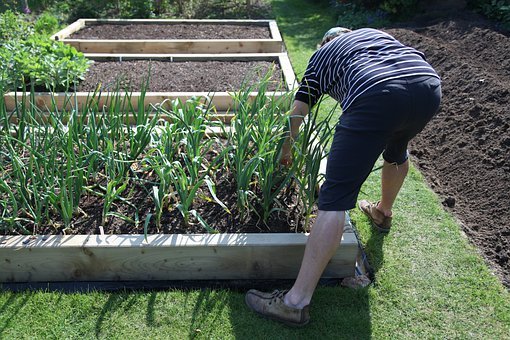We already know the benefits of home-grown food. Fruit and vegetables harvested from your own garden help to reduce carbon emissions, promote a balanced diet, and allow you to exercise your green fingers.
But the pay-off of personal crops goes beyond just a healthy lifestyle – the uses are of home-grown food are diverse and numerous. Sometimes, we have extra fruit and vegetables that just aren’t made for the dinner table, but their use is not limited to the bin.
From the sustainable to the unusual, we look at those other uses for home-grown food that you may have overlooked.
Pollen promoter
When growing fruit and vegetables, it’s easy to ignore the needs of other plants in our garden. Of course, the roses that you planted look nice, but they don’t require as much careful maintenance and attention as your blossoming tomatoes.
However, putting home-grown food first does not have to be injurious to your other growing successes. In fact, the growth of certain fruit and vegetables can help to increases biodiversity in your garden by attracting bees and butterflies which are vital for further pollination amongst the more decorative plants in your back yard. To achieve this, we recommend growing produce such as melons, courgettes, and cucumbers. As these plants are closely related, they grow well in similar soils, reducing maintenance.
Changes to industrial agriculture since the latter half of the 20th century have led to a reduction in bee colonies. But a biodiverse garden, including the growth of fruit and vegetables allows these at-risk-insects to thrive. You won’t just be benefitting yourself with food – you’ll be helping an entire species.
Pimp your compost
You’re already doing your bit for the planet by growing your own vegetables – but you can go one step further. Using your home-grown fruit and vegetable scraps to compost your garden can help you produce a more successful harvest.
The nutrients that your crops have absorbed from the soil during its growth are concentrated and released back into the soil when you compost. This concentration of good plant fertiliser can then be quickly absorbed back into the next generation of potatoes or peppers for even better growth the second time around.
Fruit and vegetable scraps should also be composted with carbon-rich materials for successful decay – your grass cuttings will do fine. One-part food scraps and three-parts hay or turf is easily achievable in a low waste garden. When we home-grow food, we think of food for thought. After this, it’s food for your food!
Food on your face
Rich with vitamin and nutrients, fruit and vegetables have as much use on your face as they do in your gut. Of course, we’re talking about face masks. When selecting your skincare products, if you’re inclined to choose a naturally based product, consider creating your own from the food you grow in your garden.
A skincare recipe that is particularly suited for the British garden is a carrot face mask. Carrots are pack full of vitamin A, with additional ingredients including vitamin C, potassium and folacin. This means that carrots in a face mask can help moisturise skin tissue and help to repair it. Carrot face masks also help build your defences against sun damage and can help to tone your skin.
The recipe is simple – cook three carrots, blend into a smooth puree, and mix with four tablespoons of honey. Allow your mixture to sit on your face for about 10 minutes before washing it off with cold water – this will allow all those important nutrients to get absorbed into your face.
There are, of course, even more recipes for natural facemasks that you can make from your home-grown food. Different combinations of fruit and vegetables will help release their respective nutrients into your skin for different results – just make sure that your creation is safe before you use it.
Colour inspiration
Do you remember using carefully carved potatoes and carrots with paint to create amazing prints as a child? Your parents may even have your garden scene on the refrigerator. We’re taking this to another level and saying you can actually use your home-grown fruit and vegetables to create your own paint.
The process is easier than you may expect. Simply boiling colourful fruit and vegetable materials will release their natural colours into the water. Choosing your colours is equally uncomplicated: strawberries make red, blueberries make blue, kale makes green, and oranges and carrots make orange. Other fruit and vegetables are unlikely to trip you up on their colour production.
After boiling, strain and keep your coloured water and put your food waste into the compost bin. You can use your coloured water to naturally die materials or create paint by adding powder sugar to create a thicker consistency that is more suitable for traditional canvas painting. With a bit of practice, you’ll be able to use your last supper to recreate Da Vinci’s The Last Supper.
The uses of home-grown fruit and vegetables are clearly numerous. But by using natural ingredients and materials to achieve great results in many different aspects of life, the benefits reach beyond the initial uses of their produce. The use of grow bags has made it easier to grow your own fruit and vegetables in your garden. While we don’t expect you to eat everything you produce, you can certainly make more than carrot cake with your crops. You can help the planet and do more than just eat your greens!



 Bitcoin
Bitcoin  Ethereum
Ethereum  Tether
Tether  XRP
XRP  Solana
Solana  USDC
USDC  TRON
TRON  Cardano
Cardano  Lido Staked Ether
Lido Staked Ether  Avalanche
Avalanche  Toncoin
Toncoin